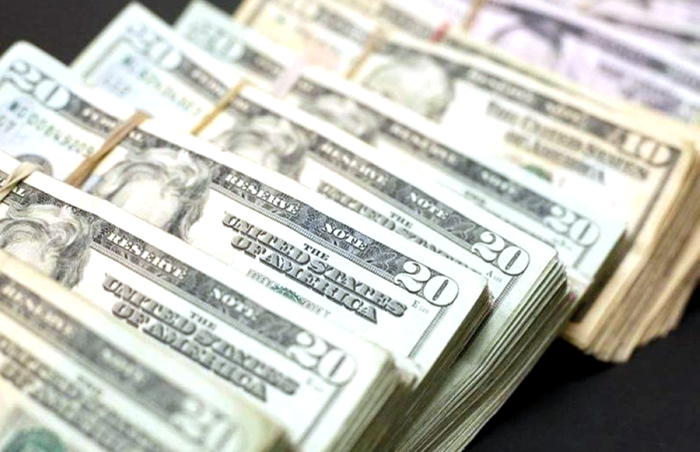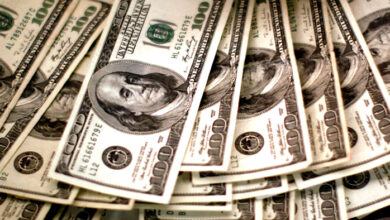After U.S. yields went up, the dollar’s value against the yen is at its highest level in 24 years.

TOKYO- The dollar reached its highest level against the yen in 24 years on Wednesday. It broke through levels that caused Japanese officials to step in last month, as traders got ready for U.S. inflation data and what it might mean for future Federal Reserve rate hikes.
Sterling fell to its lowest level in two weeks after Bank of England Governor Andrew Bailey said again that the central bank will stop buying emergency bonds on Friday and told pension fund managers to finish rebalancing their positions by then.
But the pound got a little stronger after a report in the Financial Times said that the BOE had privately told lenders that it was ready to keep buying bonds.
The risk-sensitive Australian dollar fell to its lowest level in over 2 1/2 years.
In Asian trading, the dollar got stronger by 0.22%, reaching 146.18 yen. This was the first time since August 1998 that the dollar had been this high.
Related: Dollar to PKR:: Rate of the US Dollar in Pakistan on October 11, 2022
The difference between the yields on long-term bonds in the U.S. and Japan has a big effect on the Japanese yen. Overnight, the benchmark 10-year Treasury yield rose to 4.006%, which is close to a 14-year high. In contrast, the Bank of Japan keeps the yield on equivalent Japanese government bonds near zero.
On September 22, when the yen fell to as low as 145.90 per dollar, the Japanese government bought yen for the first time since 1998.
At a regular press briefing on Wednesday, Chief Cabinet Secretary Hirokazu Matsuno said that officials are still ready to take the right steps to stop the currency from moving too much.
Alvin Tan, head of Asia currency strategy at RBC Capital Markets, said, “Given the strong dollar trend, it’s possible that instead of defending the yen at a certain level, the Bank of Japan would try to slow down the rate of the dollar rise by defending at a higher level” than before.
Tan thinks that Japan’s currency will fall to 150 per dollar by the end of the year. He added, “However, the Bank of Japan is also aware of the rising volatility at the global macro level, which is now a bigger reason for possible further intervention than the volatility in any individual currency.”
The BOJ is a big outlier among the central banks of developed countries because it plans to keep buying a lot of bonds even though policymakers around the world are tightening to stop inflation.
The U.S. dollar index, which compares the greenback to a basket of six major peers like the yen, sterling, and the euro, went up by 0.08% to 113.43. Earlier, it hit 113.59, which was the highest level since September 29.
Overnight, at $0.9670, the euro fell to its lowest level since September 29. It stayed close to that level, trading 0.08% lower than Tuesday’s close at $0.96975.
Fears that the Fed and most of its peers will continue to tighten policies aggressively, pushing the global economy into recession, have played a significant role in risk sentiment in recent months.
On Tuesday, the International Monetary Fund said that countries that make up a third of the world’s output could be in recession next year. It also told central banks to keep fighting inflation.
Some market participants had hoped that the Fed might slow the rate of rate hikes through the end of the year. However, recent strong reports on the U.S. job market have dashed those hopes.
The U.S. consumer price report, which is due on Thursday, could cause currency volatility, and a sharp rise in the dollar-yen could lead to intervention, said Joseph Capurso, a currency strategist at Commonwealth Bank of Australia (OTC:CMWAY).
“But we still believe that any moves in USD/JPY caused by intervention will be reversed in a few weeks,” Capurso wrote in a note to clients.
Also, sterling jumped 0.4% to $1.1008 after the FT report. Before that, it had hit $1.0925, which was a new low since September 29.
Gilt yields went up in the U.S. and other places on Tuesday morning after the BOE governor said something.
“GBP remains at risk of sudden drops due to uncertainty about the government’s ability to pay back its debt and the chaos in UK pension funds, which has spread to the UK government bond market,” Capurso said.
Related: After the case for U.S. rate hikes gets stronger, the dollar goes up.
Overnight, at $0.9670, the euro fell to its lowest level since September 29. It stayed close to that level, trading 0.08% lower than Tuesday’s close at $0.96975.
The Aussie fell as low as $0.62395, which is a level that hasn’t been seen since April 2020. It was last traded at $0.62555, which is 0.28% lower.





